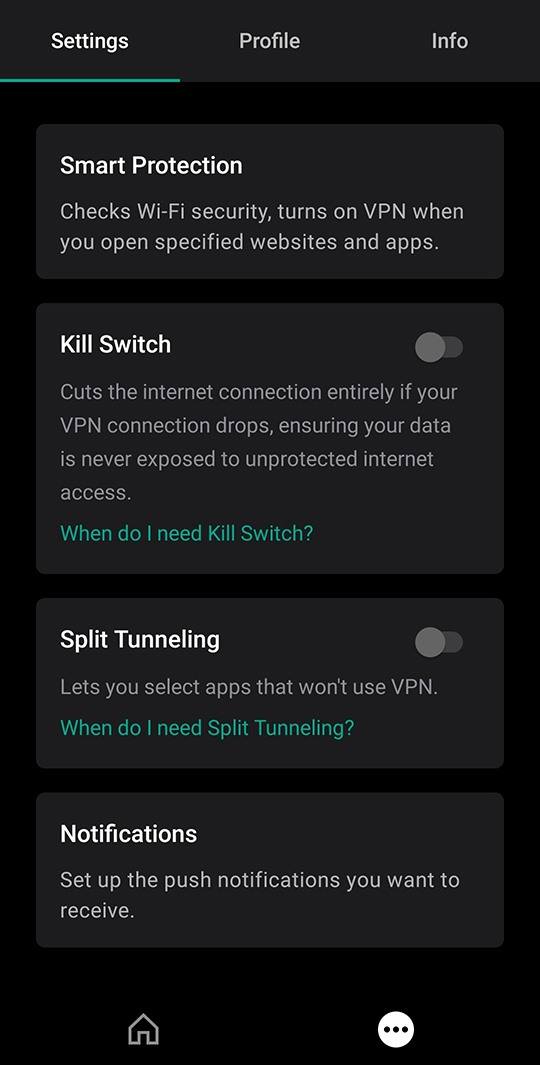VPNs are becoming more and more popular: a secure, encrypted connection is needed these days not only by travelers, but also gamers, streamers, crypto investors and even fans of foreign TV shows. And that’s why the VPN industry is developing rapidly. But did you know that just by updating your VPN application and configuring it a bit you can significantly increase the speed, convenience and security of your connection? You will after reading this post!
New protocols
When you turn on a VPN connection you establish an encrypted connection to one of the VPN provider’s servers. This is done to change your public IP address and to protect your connection from prying eyes on the local network. For many years, all VPN services offered a choice between the old and not very secure PPTP and L2TP communication protocols, and the newer yet slower OpenVPN protocol — which is more secure in terms of encryption.
But recently some new VPN protocols have appeared. For example, there’s the Catapult Hydra protocol used in Kaspersky VPN Secure Connection. It’s the record holder for speed, and thanks to this protocol our VPN recently won a comparative test of leading VPN solutions. Due to the proprietary nature of the Catapult Hydra protocol, security researchers have raised questions about its security and privacy. However, a recent independent audit of the Catapult Hydra source code found no critical vulnerabilities.
Another popular protocol to look out for is WireGuard. It’s also faster (much more so than OpenVPN) at transferring data, has minimal latency, and provides an instant connection. At the same time, its source codes are open, so it can be found in many VPN services, including Kaspersky VPN Secure Connection.
What to do: update the application and select the correct protocol in the VPN client settings on each device. Speeds in descending order go like this: Catapult Hydra, WireGuard, OpenVPN. Other protocols don’t provide sufficient security — especially for financial transactions.
Optimal servers
The key thing to look out for when choosing a VPN service is the number of servers it has and their location. The more servers — the greater the chance of a good connection.
It’s logical to choose a server based on your needs: either as close as possible to your actual geographical location, or located in the region whose websites you plan to visit.
So, if you’re using a VPN for safe gaming, you should choose a VPN server in the same country where the game servers are located — this will ensure a faster, more stable connection.
When watching foreign media content, servers located in the country where the content is streamed also tend to provide a more stable connection.
Sometimes municipal or government services aren’t available from abroad for various reasons. In this case, the right VPN server helps residents of the city, or citizens of the country, get the information they need while away from home.
What can happen is the nearest server being overloaded and its connection speed drops as a consequence. In this case it’s worth trying other servers in the same region. By the way, Kaspersky VPN outperforms most competitors not only in terms of speed, but also in terms of the number of available servers: 99 locations in 80 countries, with more than 2000 servers deployed.
What to do: update the application regularly and check for an updated list of servers. Choose the best VPN server for your tasks, taking into account the geographical proximity to the required online services.

Fully up-to-date, Kaspersky VPN Secure Connection has just under a hundred server locations around the world, and also features a convenient dark theme.
Protecting all devices and the entire network
Every VPN service has clients for Windows, iOS and Android, but software manufacturers sometimes ignore Mac computers. However, there is an effective solution not only for Macs, but also for Smart TVs, game consoles, and smart-home devices that don’t support VPNs themselves. This is a VPN security setting on your router that allows you to route all traffic from any device on your home network through the VPN.
Of course, our VPN can work on a router — and it has a “native” Mac version as well.
What to do: Make sure that all your devices are running through a VPN, especially those which you use to conduct financial transactions.
Advanced settings
At first, almost all VPN applications worked on the principle of a simple switch: turn on/turn off. But in real life this isn’t always convenient. For example, a smartphone owner wants to always protect a crypto wallet application with a VPN, and doesn’t want to work with finances through an unencrypted connection; meanwhile, some online stores require that the VPN be turned off. Some people may also need to ensure that not a single byte goes into the network without encryption.
Therefore, modern VPN applications offer settings such as Split Tunneling and a Kill Switch.
Split Tunneling lets you choose applications that always work through the VPN, or, conversely, without it. It’s convenient, for example, to use two different browsers: one that provides access to sites through the VPN, and the other directly.
The Kill Switch, on the other hand, prevents any data from being sent if the VPN connection is unexpectedly interrupted — say, when the device connects to another network. This can happen, for example, when your smartphone automatically switches from cellular data to known Wi-Fi networks. Kaspersky VPN Secure Connection supports both features.
What to do: configure the VPN individually for those applications that need it, or, conversely, disable the VPN for certain applications. Use different browsers to simultaneously access sites with and without a VPN protocol. If protecting your traffic is essential, enable the Kill Switch.
 VPN
VPN

